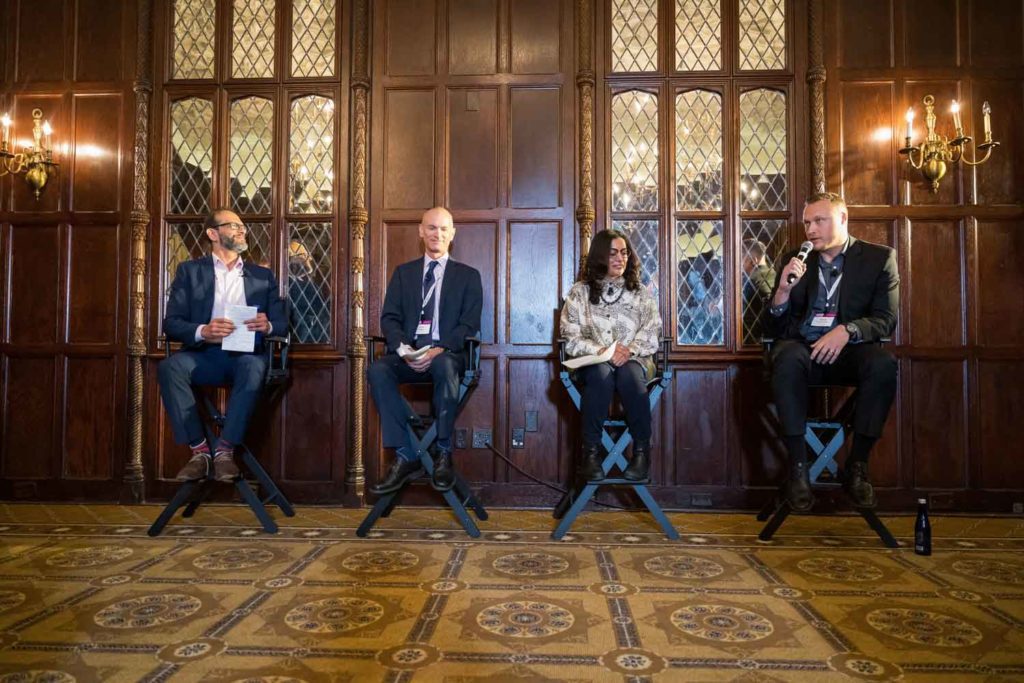
The opening panel of this year’s GTNF looked at the challenges in shaping a sensible regulatory framework for reduced-risk products. The way researchers silo disciplinary expertise certainly is a contributing factor to the regulatory space for tobacco harm reduction (THR) being so polarized, argued Sam Hampsher-Monk, managing director at BOTEC Analysis. “Often, empirical research is presented in a decontextualized way,” he said. “Publishers of scientific media seem to look for articles on e-cigarettes true to the motto ‘the more extreme, the better,’ thus sacrificing the middle ground.”
Scientists, too, tend to surround themselves with people who think like them, he added, which leads to the creation of echo chambers. “With e-cigarettes specifically, part of the problem is that we’re using unexamined moral judgements to interpret the available evidence, but when we do this, we need to provide reasons for whatever judgement we make. As this rarely happens, an analytical conversation will quickly move to a subjective one.”
Hampsher-Monk said that no scientific contribution should be taken for face value but needed to be scrutinized regardless of authorship.
Empirical economist James Prieger, a professor of economics and public policy at the School of Public Policy at Pepperdine University, said that in other industries, such as telecommunications, it was common and unproblematic that economists were paid by companies to do research, whereas in tobacco research, any sort of funding from the industry or even indirectly from the industry was being ignored. However, the more people produce data, the better, he pointed out. “The industry has access to data that I as an academic could never replicate. On the other hand, I as an academic have access to arguably some more brain power. Put the data out there, and let it go through some refereeing process.”
For a recent study looking at the barriers to THR, Pritika Kumar, senior fellow for integrated harm reduction policy at the R Street Institute, spoke to social workers, psychologists, nurses and several harm reduction (HR) coalitions across the U.S. as well as physicians working in HR coalitions. The obstacles highlighted by participants included physicians lacking the training and experience of leading these conversations with patients other than advising them to quit or call a quit-line number. HR coalitions, which are funded by departments of health, should be tobacco-free, which has often led to bizarre rules; one doctor in a HR coalition told Kumar that people could bring their syringes but not their vapes. “The problem is that messaging around safer nicotine products is so inconsistent,” Kumar said. “While at the FDA’s website there are some hints at THR, the CDC’s [Centers for Disease Control and Prevention] site is all about how harmful these products are. Physicians don’t get clear information, which would be extremely important.”
Prieger stated that physicians and others needed sources of information that they could hand on to patients. He described the difference between the U.K. and the U.S. in the treatment of pregnant smokers: In the U.K., pregnant smokers having trouble quitting smoking during the first trimester receive a printed sheet with information about e-cigarettes and why pregnant smokers should switch. By contrast, in the U.S., the Pediatrician Association explicitly states that e-cigarettes are not safer.
Misconceptions about THR prevail in many parts of the world and have a big impact on decision makers in a situation where, as surveys have shown, 70 percent of doctors believe that nicotine causes cancer. To meet this challenge, the stakeholder groups that THR advocates are talking to need to be broadened, Kumar said. “The narrative is currently shaped by public health or well-funded public pressure groups. I see that politicians gravitate toward data that makes sense to them based on their constituents, not so much policy that is really informed by science. Policymakers have no idea how things unfold in enforcement.”
Ironically, THR products face most resistance among legislators in low-income and middle-income countries, where large parts of the population consume harmful forms of tobacco. In Russia, Indonesia, China, India and Bangladesh combined, there are about 700 million people who smoke combustible cigarettes. Most of these countries have banned e-cigarettes or enacted policies not favorable to THR. As moderator Sudhanshu Patwardhan, director of the Center for Health Research and Education, suggested, there seem to be only two policy options—either a free, Wild West-style market or a prohibitive market.
Hampsher-Monk rejected the thought of such a false dichotomy, though, saying that politicians often simply copy neighboring countries’ regulatory decisions. However, regulators need to make sure that the unintended consequences of their decisions don’t outweigh the benefits and avoid a replication of failures elsewhere. He explained that with smoking and nicotine use being complicated issues, it is rather unlikely that two populations will respond in the same way to the same regulations.
Panelists agreed that, in their endeavor to protect youths, health authorities greatly neglect the requirements of adult smokers seeking to switch to less hazardous alternatives. To the latter, flavors are an important criterion, so flavor bans hinder harm reduction efforts. On the other hand, studies have shown that the combustible cigarette and e-cigarette markets for youths are linked; a higher excise tax on vaping has shown to increase youth smoking. “The idea of protecting the children is diametrically opposed to helping adult smokers quit,” Hampsher-Monk concluded, “because if you forego a chance to help adult smokers quit, they will continue to model smoking to their children.”











